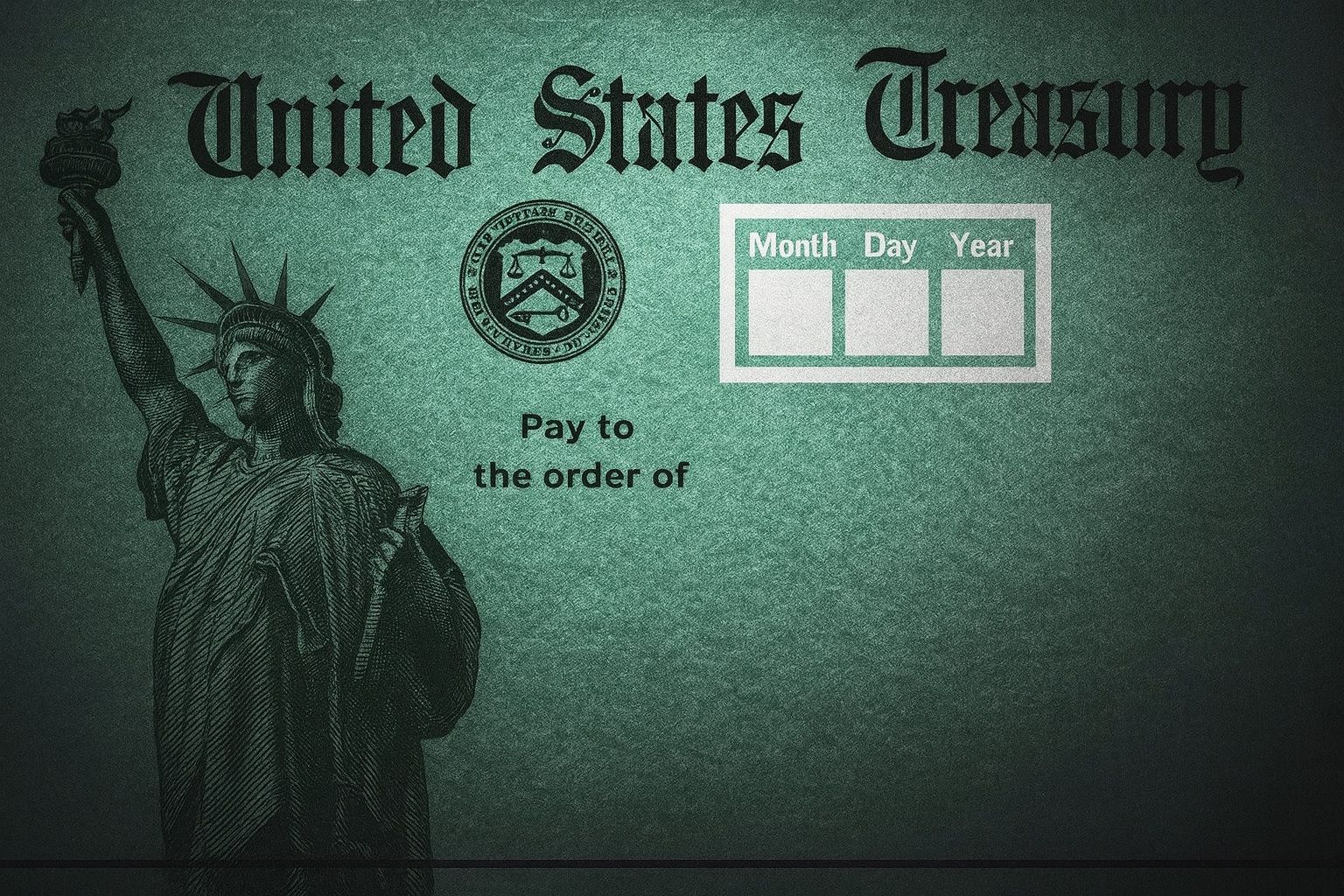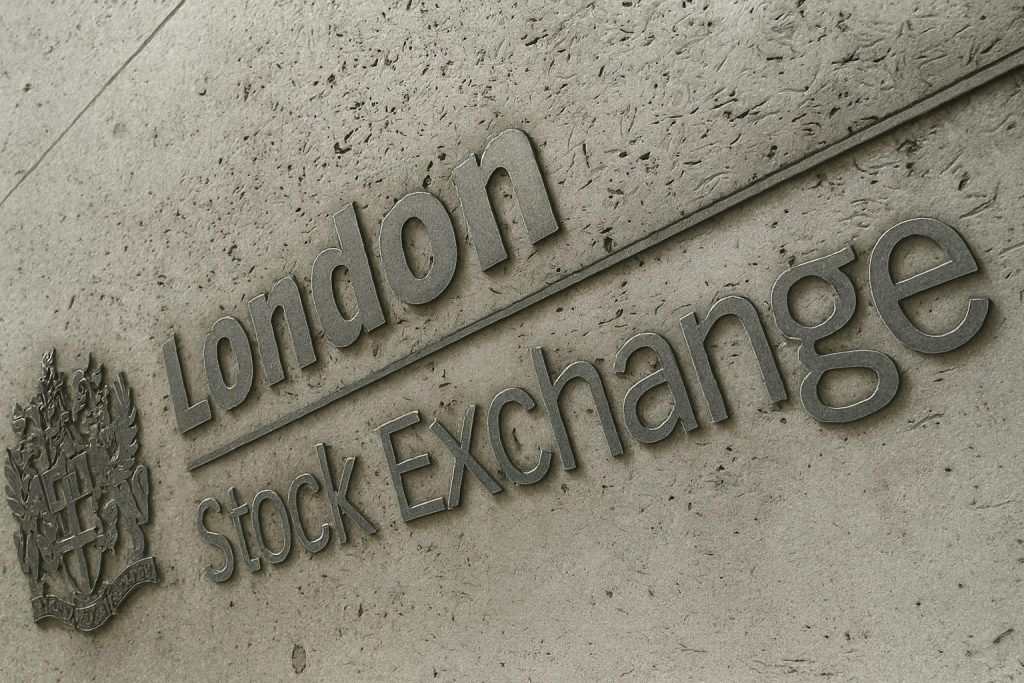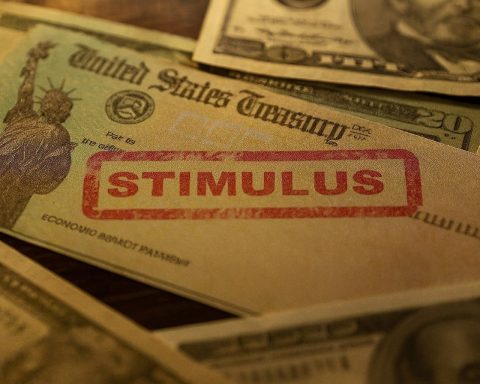- No New Federal Checks:No fourth stimulus check is coming in October 2025. Congress has not passed any new relief package, and the IRS confirms “no new payments of $1,390, $1,702 or $2,000 are coming.” In fact, “neither Congress nor the IRS has authorized a new round of federal stimulus checks,” and “the IRS will not send any stimulus check in October 2025” [1]. The last federal stimulus payments (from COVID-era laws) went out by early 2021, and any unclaimed funds from those expired back in April 2025 [2] [3].
- Viral Rumors Are False:Social media posts hyping a surprise October 2025 stimulus are baseless. Viral claims of $1,390, $1,702, or $2,000 checks this month have been flatly denied by officials [4]. The IRS and U.S. Treasury call these stories “bogus,” warning “there are no new stimulus checks on the way” [5]. One widely cited figure – $1,702 – isn’t a stimulus at all; it refers to Alaska’s 2024 Permanent Fund Dividend (the state’s oil revenue payout), not any federal payment [6]. Fact-checkers stress “all such claims are false” [7], and no official source or legislation supports them.
- Trump’s “Tariff Rebate” Idea Isn’t Law: President Donald Trump has floated the idea of sending Americans checks funded by tariff revenues, but it remains just a proposal, not reality. As recently as Oct. 2, Trump said his team was “looking at something” where money from higher tariffs could pay down debt and provide “a ‘distribution’ to the people, almost like a dividend” – possibly $1,000 to $2,000 per person [8]. However, no such plan has been enacted. Any federal payout requires an act of Congress, and “no such legislation… has passed” for 2025 [9]. Similarly, Senator Josh Hawley’s proposal to send $600 per person (up to $2,400 per family) using tariff revenue has “not passed the Senate or the House” as of October [10]. Trump’s other musings – like a $5,000 “DOGE dividend” (from a so-called Department of Government Efficiency) – are speculative talking points, not approved policies [11].
- State “Inflation Relief” ≠ Federal Stimulus: Some states are sending out one-time payments this fall, which may be causing confusion – but these are state-run programs, not a new federal stimulus. For example, New Jersey is mailing out ANCHOR property-tax rebate checks to residents, and New York has authorized one-time “inflation relief” payments up to $400 for eligible taxpayers [12]. Likewise, states like Pennsylvania, Georgia and Colorado have issued modest tax rebates or credits to help with rising costs [13]. Texas, by contrast, has no such payments on the way – lacking a state income tax system, Texas has focused on property tax cuts rather than any direct inflation rebates [14]. Importantly, these state initiatives are not new federal stimulus checks, and most states (and the federal government) aren’t sending any new cash in October [15].
- Shutdown and Economy Update: The U.S. government shutdown that began October 1, 2025 is still ongoing, further reducing chances of any immediate relief package. With federal funding frozen, lawmakers are tied up in budget fights, not planning stimulus checks. Yet interestingly, Wall Street is unfazed – despite the political gridlock, the stock market has rallied to record highs in early October. The S&P 500 and Dow Jones Industrial Average both notched all-time peaks last week [16]. The Dow climbed above 46,500 for the first time [17]. Market experts note that investors have largely “shrugged off” the shutdown so far [18], focusing instead on hopes the Federal Reserve will cut interest rates in coming months to support the economy [19]. That optimism about easier monetary policy – a form of stimulus via lower borrowing costs – has outweighed Washington’s stalemate in driving stocks upward.
- Outlook: Don’t Expect a “Fourth Check” Soon – Economists and officials do not foresee another broad stimulus check unless the economy sharply deteriorates. Inflation is still running above the Federal Reserve’s 2% target [20], and policymakers worry that another round of free money could reignite price spikes [21]. Instead of stimulus payments, Congress’s priorities have shifted to areas like infrastructure and deficit reduction [22]. In short, there’s little political appetite for new stimulus checks right now. Any future relief would likely be narrowly targeted – or come from existing programs (like tax credits or unemployment boosts) – rather than no-strings checks to all. Unless a severe recession hits, a 2025 stimulus check appears off the table, according to most analysts.
- Beware of Scams – Stay Informed via Official Sources: The IRS and consumer watchdogs are urging caution amid the rumor frenzy. Unsolicited emails, texts or social posts about a “new stimulus” are often scams or clickbait [23]. Fraudsters have used the $1,390 or $2,000 headlines to phish for personal information. As one outlet put it, “those rumored $1,390, $1,700 or $2,000 payments don’t exist,” and crooks are pushing these stories “to steal personal information” [24]. Always verify news of any government payment on official websites. The IRS will post any real stimulus updates on IRS.gov (and Congress on Congress.gov). If you’re unsure about a payment, use the IRS’s trusted tools – for example, the “Where’s My Refund?” tracker (for tax refunds) or “Get My Payment” portal (if it’s ever re-activated for new stimulus rounds) – rather than believing random social media claims [25]. Bottom line: don’t trust random messages about “free money.” No surprise windfall is coming this October, so plan your finances accordingly and look to existing relief programs if you need help.
No New Federal Stimulus – Confirmed by IRS and Congress
Despite hopeful chatter online, federal authorities have made clear that there is no new stimulus check approved for October 2025. Any nationwide payment to taxpayers would require a law passed by Congress and signed by the President – and that hasn’t happened. “Congress has not passed any 2025 stimulus package,” and the IRS has flatly stated that Americans will not receive any new stimulus money this month [26]. All official announcements (whether from the IRS, Treasury, or White House) consistently show no plans for a fourth stimulus round [27].
Multiple fact-checks by news outlets have reinforced this. The Associated Press, for example, spoke with an IRS official who said, “Taxpayers will not receive new stimulus checks of any amount…” in 2025 absent new legislation [28]. Fox News likewise quoted an IRS spokesperson insisting “there are no new stimulus checks on the way” despite the viral posts [29]. In short, the IRS itself has publicly debunked the October payment rumors. The only federal payments that did go out this year were the tail end of past stimulus programs: the third round “Economic Impact Payments” from early 2021 could still be claimed as a tax credit up to April 15, 2025 – but that deadline has passed [30]. Any unclaimed stimulus funds from the pandemic-era programs have now reverted back to the U.S. Treasury [31]. No new law = no new check, and no 2025 stimulus law exists.
It’s worth remembering the scale of what did happen previously. During 2020–2021, Washington approved three rounds of stimulus checks (approximately $1,200, $600, and $1,400 per person) to blunt the COVID crisis [32]. Those were unprecedented payments tied to a once-in-a-century pandemic and economic shutdown. As of fall 2023, some in Congress discussed another round, but nothing materialized. And as of late 2025, any talk of a new nationwide stimulus is purely rumor – there is no COVID relief bill or similar emergency package driving it.
In fact, political momentum has swung the other way: leaders in D.C. are now more concerned with reining in federal spending and cooling inflation than with handing out more free cash [33]. That political reality, combined with the IRS’s clear denial, means Americans should not expect any surprise deposit from the federal government this month. If you see claims otherwise, the IRS urges you to ignore them or report them – they are not coming from any official source [34].
Rumors Gone Viral – and Why They’re Bogus
So where did the October 2025 stimulus check buzz come from, if not from any real policy? In a word: misinformation. In September and early October, a flurry of posts on TikTok, Facebook, and X (Twitter) began spreading eye-catching claims that a new IRS “direct deposit” of various amounts was imminent. Common figures thrown around were $1,390, $1,702, or $2,000 per person – sometimes with captions about a “Biden bonus” or “Trump stimulus” depending on the source. None of this was grounded in any official announcement [35]. As the Hindustan Times reports, “all such claims are false” – there is no October stimulus on the schedule [36].
Several specific rumors have been identified and debunked:
- The “$1,702” Myth: Fact-checkers traced this viral claim and found it was a case of mistaken identity. $1,702 was the amount of Alaska’s 2024 Permanent Fund Dividend – a yearly payout from state oil revenues to Alaska residents – not a federal stimulus at all [37] [38]. In other words, some posts took news of Alaska cutting checks to Alaskans (the PFD is $1,000 this year, down from $1,702 last year [39]) and twisted it into a “fourth stimulus check” story for everyone. Outside of Alaska, nobody is getting $1,702 from the U.S. government, and even in Alaska that money is just their annual dividend program [40].
- The “$2,000 This Week” Hoax: Other viral content simply fabricated a story that Congress or the President approved a surprise $2,000 payment to hit bank accounts by mid-October. These appear to be clickbait headlines with no truth behind them. No new $2,000 direct deposit is on the way – that kind of broad payment would require a very public act of Congress. As one finance outlet plainly stated, “no $1,702 federal stimulus is scheduled for 2025” and similarly, rumors of $2,000 are baseless [41] [42]. Scammers often pick $2,000 as a believable-sounding number (since that was the amount of an earlier proposal in 2021), but it’s not happening now.
- The “$1,390” Story: Posts mentioning $1,390 likely stem from confusion or misinterpretation of some earlier relief measures or social security adjustments. There is no $1,390 federal payment authorized either [43]. This figure may have circulated from a speculative blog or been conflated with other programs. Regardless, the IRS has not announced anything about $1,390 checks to everyone. Officials have consistently said any such specific-dollar claims on social media are false [44].
In summary, none of these viral amounts – $1,390, $1,700ish, $2,000 – correspond to any real federal program for October. They either reference old news (like previous stimulus rounds or state initiatives) or are outright fabrications. The IRS has explicitly warned Americans not to believe these posts, emphasizing that “there are no new stimulus checks on the way” and that any legitimate announcement would be on the IRS.gov website or in official press releases [45].
Unfortunately, the allure of “free money” means these rumors spread quickly, and some people get their hopes up. It doesn’t help that living costs have been rising – folks want to believe relief might be coming. Scammers know this, which is why phony claims often spike on social media. They use sensational headlines and doctored screenshots (for example, a fake CNN tweet or a doctored IRS letter) to make it seem real. Always remember: unless you hear it from the IRS or a trusted news source with a cited official, assume random stimulus news on social media is probably fake. As the Hindustan Times dryly noted, the IRS will “not send any stimulus check in October 2025.” Period [46].
Trump’s “Tariff Rebate” Talk – What’s Actually Proposed?
One reason the October stimulus rumor caught fire is that it contained a kernel of truth – a political talking point – that got exaggerated. Specifically, former President Donald Trump (who, as of October 2025, is once again President) has been publicly musing about the idea of a tariff-funded rebate or dividend to citizens. In theory, this isn’t a classic COVID-style “stimulus check,” but rather a new concept tied to trade policy. However, it’s important to stress: this idea is only a proposal and has not been enacted in any form.
Here’s the background: In late September and early October, President Trump suggested that the U.S. could impose higher tariffs on foreign goods (particularly from China) and use some of that revenue to send money directly to Americans. During an interview on October 2 with One America News Network, Trump said his team was “looking at something” where “revenue from higher tariffs” could help pay down the national debt and give “a ‘distribution’ to the people, almost like a dividend” [47]. He floated check amounts “between $1000 and $2000” for Americans if this plan were implemented [48]. Trump has many times touted the notion that other countries’ tariff payments to the U.S. could effectively bankroll benefits for U.S. citizens [49] [50].
While that concept made headlines and certainly got people talking, there are a few catches:
- No Congressional Approval: Tariff rates can be adjusted by the executive branch to an extent, but sending out money requires Congress. There is no law in place authorizing a “tariff rebate” check to Americans, and as of now Trump’s idea hasn’t even been formally introduced as a detailed bill. Lawmakers in both parties would have to agree to this, and currently there’s no indication of broad support in Congress for a tariff-funded check scheme.
- Insufficient Funding: Independent analysts point out that even if new tariffs were imposed, the math might not work out for large checks. Tariff revenues are not a magic, endless pot of gold – they depend on trade volumes and often get offset by economic side effects. One analysis noted that even if Trump’s plan were enacted, the money generated would fall far short of what’s needed to cut $1,000+ checks to 300 million Americans [51]. (For context, $1,000 per person nationwide is roughly $330 billion; typical annual tariff revenue is a fraction of that.) So the idea might sound good in a rally speech, but funding such “dividends” would be a serious challenge.
- Timing and Logistics: Even if President Trump could somehow redirect tariff money by executive order, actually distributing checks isn’t trivial. The Treasury and IRS would have to set up a program (just as they did for COVID payments), and Congress would likely step in with legal questions. In the middle of a government shutdown and with an election year on the horizon, launching a new program like this in mere weeks is highly unlikely.
Trump’s tariff-dividend talk is somewhat reminiscent of another catchy idea he mentioned on the campaign trail: a “Department of Government Efficiency” (DOGE) – yes, acronym intentionally like the dog-themed cryptocurrency – that would save money by cutting waste, supposedly enough to give households up to $5,000 each [52]. Again, this was never a formal policy, just a concept floated in speeches. It grabbed attention (and likely contributed to these “stimulus” rumors online), but no such program exists. The Austin American-Statesman noted that these Trump proposals remain “purely speculative talking points, not actual policy” at this stage [53].
Besides Trump, there was also Senator Josh Hawley’s idea, which got some play in the media and may have fueled public expectations. Hawley introduced the American Worker Rebate Act in 2025, aiming to use tariff revenue to send roughly $1,200 per family (about $600 per adult) to working- and middle-class households [54]. While that bill got attention, it has not advanced on Capitol Hill. As of late September, it “has not passed the Senate or the House,” nor even been brought to a full vote [55]. In other words, it’s stuck in limbo like many bills. If Hawley’s plan ever does gain traction, it would still take time to implement – and it wouldn’t be an October 2025 surprise; it would be a deliberate policy roll-out.
The bottom line: People heard Trump and others talking about new rebates or “stimulus-like” payments, and some assumed this meant checks were coming now. But talk is not law. Unless and until these ideas clear Congress, no one is actually getting a tariff-funded check. The President cannot unilaterally mail out money from tariff collections without legislative approval. As the Associated Press reminded in a fact-check, “Stimulus checks… are authorized by Congress through legislation and distributed by the Treasury Department.” [56] That process hasn’t happened for any new checks in 2025.
State Inflation Relief vs. Federal Stimulus – Know the Difference
Another source of confusion has been the flurry of state-level relief payments in 2023–2025. If you’ve heard friends or social media say “Well my state is sending money – what about a federal check?”, it’s important to distinguish these programs. A handful of states, using their own budgets, have opted to send residents small rebates or “inflation relief” checks this year. These are not funded by Congress or part of any national plan; they’re isolated efforts by state governments, usually in response to budget surpluses or specific legislation at the state level.
For instance, New Jersey has a well-publicized property tax rebate initiative called ANCHOR (Affordable NJ Communities for Homeowners and Renters). This fall (October 2025), New Jersey began distributing ANCHOR checks to eligible homeowners and renters, providing several hundred dollars of relief as reimbursement for property tax burdens [57]. At the same time, New York State approved what Governor Kathy Hochul termed an “inflation relief” payment – essentially a one-time tax rebate. One-time checks up to $400 have been going out to New York taxpayers who meet certain income criteria [58]. These programs are real, and local news in those areas has covered lines of people waiting for checks or direct deposits arriving. The Statesman and Hindustan Times both noted that the stimulus rumors gained steam just as NJ and NY checks were in the news [59]. People see “checks are coming” headlines, but might miss that it’s only in specific states.
Other states took similar measures earlier: Pennsylvania last year sent bonus rebates to elderly and disabled residents who qualified for a property tax/Rent rebate program [60]. Georgia and Colorado each offered modest tax rebates in 2022–2023 when their budgets allowed [61]. California (in 2022) issued “inflation relief” debit cards to millions of residents as gas price rebates. Illinois did a mix of small rebate checks and gas tax holidays. Every state’s approach has been a bit different, but the key is these were state decisions using state funds.
Texas, by contrast, is an example of a state that has not issued any direct inflation checks – and likely won’t, due to how its tax system is structured. Texas doesn’t collect personal income tax, which is the mechanism many states used to rebate money (e.g. sending refunds through their state tax authority). Instead, Texas tackled high property taxes by passing a massive $18 billion property tax cut package in 2023 [62]. For Texans, that relief comes in the form of lower taxes (and only if you own property or otherwise benefit indirectly), not a mailed check. Texas lawmakers even approved further property tax reductions pending a statewide vote in Nov 2025 [63]. But nowhere in Texas was there a plan to send a “fourth stimulus” to all residents. The Austin American-Statesman frankly told readers hoping for a Texas stimulus: don’t count on it. Any financial relief for Texans is more likely to come via tax breaks, not a check in the mail [64].
The takeaway is that state relief programs are entirely separate from federal stimulus. Just because you hear about checks in one state doesn’t mean the U.S. government has launched a new nationwide payment. In fact, some of the state efforts might be causing rumors to swirl across the country. For example, when New York’s $400 checks started going out, people elsewhere wondered, “Am I getting $400 too?” The answer was no, unless you live in NY. Similarly, news of New Jersey’s ANCHOR payouts might have led some to believe “checks in October!” without realizing it was only NJ residents. It’s understandable – these headlines often don’t make the distinction obvious – but it underscores the need to double-check the details.
If you’re unsure whether your state is offering any rebates or bonuses, you can usually find info on your state treasury or tax department website. As of October 2025, only a minority of states have active inflation-relief payments. Many did something in 2022 or 2023 and have since stopped. And crucially, none of these state programs indicates anything about a new federal stimulus. The federal government did send a lot of money to individuals during the peak of COVID, but since then it has shifted to other measures (like funding infrastructure, student debt relief efforts, etc.) rather than more checks.
In summary: State checks = limited, local relief. Federal stimulus = none right now. Don’t let news of one convince you the other is happening. If you see a headline like “Millions to get relief checks in October,” read closely – it’s probably referring to a particular state or a specific group (like New Jersey homeowners, or Alaska dividend recipients, or similar), not the entire nation.
Government Shutdown & Economic Outlook – Why Relief Isn’t Likely Now
Complicating the stimulus chatter is the fact that as of early October 2025, the U.S. government is in a partial shutdown. Funding for many federal agencies lapsed on Oct. 1 after Congress failed to agree on a budget or even a temporary continuing resolution. This means hundreds of thousands of federal employees are furloughed, national parks are closed, and many government services are limited. It also means Congress is in turmoil, with intense debates over spending levels – hardly an environment conducive to authorizing new payouts like stimulus checks.
If anything, the shutdown highlights the political gridlock in Washington. Lawmakers are focused on getting the basic government funding restarted; introducing a costly stimulus check initiative would be adding fuel to the fire. In fact, any idea of extra payments would likely become a partisan flashpoint (some legislators would argue it’s inflationary or fiscally irresponsible at this time). So, realistically, no one on Capitol Hill is pushing a stimulus check while the government is closed – they’re trying to simply turn the lights back on first. As Reuters noted, a protracted shutdown could even delay economic data releases and cloud the economic picture [65] [66], which makes big policy moves even less likely.
Despite these challenges in D.C., one might expect the financial markets to panic – but they haven’t. Instead, Wall Street has been surprisingly upbeat in early October. In the first week of the shutdown, the stock market actually climbed. The S&P 500 index and the Dow Jones Industrial Average both hit record highs during the first few days of October [67]. For example, the Dow closed above 46,500 for the first time ever, and the S&P saw a new peak (albeit by a slim margin) [68]. This seems counter-intuitive: why would stocks rise when the government is frozen and no stimulus is coming?
Market analysts say investors are looking past the shutdown and even the lack of new fiscal stimulus. Instead, they are anticipating that the Federal Reserve will respond to any economic softness with interest rate cuts – essentially providing stimulus via monetary policy. As one strategist explained, historically markets “shrugged off government shutdowns” that are short-lived [69]. What matters more to big investors is what the Fed will do with rates, inflation, and the broader economy. Right now, there’s a growing belief that inflation is slowly cooling and the Fed may start lowering interest rates in 2026 if not sooner. That prospect – cheaper money, easier borrowing conditions – is bullish for stocks. It’s acting as a “powerful tonic” that outweighs negatives like the shutdown or the absence of new government spending [70].
In essence, Wall Street is saying: “We don’t need a new stimulus check, we just need the Fed to ease up.” The rally implies that traders are not banking on Congress to boost the economy; they’re banking on the central bank. Indeed, many experts have noted that another round of stimulus checks now could actually worry Wall Street, because it might force the Fed to stay hawkish (to counteract inflation). Instead, investors are happy to see fiscal restraint in D.C. while waiting for a potential rate cut “stimulus” from the Fed.
That said, the current optimism in markets comes with a dose of caution. If the shutdown drags on much longer or if political brinkmanship gets worse (e.g. a debt ceiling standoff after this), confidence could falter. Additionally, if inflation surprises to the upside again, the Fed might rethink any rate cuts, which would remove some of that market support [71]. As of now, though, the base-case scenario for many forecasters is a “soft landing” – inflation easing without a deep recession – which wouldn’t necessitate big federal stimulus. In this scenario, no stimulus checks are actually a good sign, implying the economy doesn’t need emergency life support.
From a public perspective, the lack of new stimulus means households shouldn’t count on a government windfall to offset any rising costs. Instead, any relief is coming from things like slightly lower inflation rates, wage increases, or state programs rather than a check from Uncle Sam. For example, gas prices and grocery inflation have been volatile, but the trend is hopefully moderating. The government shutdown, if resolved soon, likely won’t change everyday life too much (aside from delaying some services or pay for federal workers in the short term). The bigger concern would be if the shutdown signaled broader dysfunction that spooked the economy. But again, that’s not the case yet – consumer spending and employment have been holding up, albeit more slowly than during the post-pandemic boom.
In summary, the current economic outlook in late 2025 is mixed but not dire – certainly not bad enough to force a stimulus check like in 2020. Growth has cooled compared to last year, and inflation is still higher than ideal, but we’re not in a recession (at least not at the moment). Policymakers are more inclined to let the economy navigate a soft landing than to inject more cash which could overheat things again. So long as that’s true, a broad stimulus check remains off the policy table. The focus in Washington is on passing budgets, managing interest rates, and targeted programs (like infrastructure investments or student debt relief) rather than blanket checks.
How to Protect Yourself from Scams and Find Real Assistance
Whenever there’s buzz about “free money,” scammers come out of the woodwork. The recent stimulus rumors have unfortunately provided a hook for fraud attempts. People have reported receiving text messages or emails claiming something like, “You are eligible for a new $2,000 federal stimulus! Click here to claim.” These are phishing scams. The IRS does not send out random texts or DMs about stimulus payments – that’s a red flag. In fact, the IRS specifically states it will never text or email you asking for personal or financial information for payments. If you get an unsolicited message about a stimulus, do not click links or give out data.
Instead, remember these tips:
- Rely on Official Info: If you want to know if there’s a stimulus or any government payment coming, check the IRS’s official website or major news outlets. The IRS has a dedicated page for Economic Impact Payments and will update it if anything new is authorized. As of now, that page simply confirms that the first three stimulus rounds are done and no new ones are in the pipeline [72]. Also, tools like “Get My Payment” (which was used for past stimulus checks) are inactive now – you can’t use them to find a non-existent fourth check. The IRS’s “Where’s My Refund?” tool is useful for checking the status of your tax refunds or any remaining tax credits, but it will not show a stimulus payment for 2025 because none is approved [73].
- Watch for IRS Warnings: The IRS often issues press releases about trending scams. If people are getting duped by stimulus rumors, the IRS will usually put out a notice. They have a hotline and email (phishing@irs.gov) where you can forward suspicious communications [74]. State tax agencies similarly warn about local rebate scams (e.g., New York warned of scams around its inflation checks [75]). Stay alert and when in doubt, verify through an official channel.
- Don’t Pay “Fees” for Free Money: A common scam is someone says, “To get your $2,000 stimulus, you need to first pay a small processing fee or provide bank info.” This is a scam. Legitimate government payments don’t require you to pay upfront. During the real stimulus distributions, you either got the money automatically or you claimed it on a tax return – you never had to pay a facilitator. So if anyone asks for money or sensitive info (SSN, bank account, etc.) in exchange for a supposed stimulus, cut off contact. The Austin Statesman and others have underscored that any future stimulus would be communicated through official IRS notices or direct deposit like before – you won’t be individually contacted by random agents on social media to “sign up” [76].
Now, on the flip side, what if you genuinely need financial help right now? Without a new round of federal checks, your best bet is to look at existing programs and resources:
- Tax Credits: If your income is moderate or low, make sure you’re taking advantage of credits like the Earned Income Tax Credit (EITC) or the Child Tax Credit when you file your taxes. These can put thousands of dollars back in your pocket if you qualify. There was a one-time expansion of some credits in 2021 that has since expired, but the base programs still exist. Check IRS.gov or ask a tax preparer if you’re eligible – many people don’t realize they are. As a reminder, the deadline to claim the 2021 stimulus via the Recovery Rebate Credit has passed, but credits for 2022 and 2023 tax years are on the table [77].
- Unemployment Benefits: If you lost your job or your hours were cut, you might qualify for unemployment insurance. There’s no extra federal pandemic boost now, but the standard state unemployment is there. Also, some states have retraining programs or assistance for those affected by COVID-era job losses.
- SNAP & Food Programs: With food prices having been high, programs like SNAP (food stamps) or WIC can help those eligible. Over 40 million Americans use SNAP and it’s a reliable form of assistance for groceries if you fall under certain income thresholds.
- Local Utility/Rent Relief: Many cities and counties still have funds from earlier federal aid that they’re using for rental assistance, utility bill help, or other local aid. It’s worth dialing 2-1-1 or checking your city’s website to see if any COVID relief funds are being distributed in other ways. For example, some places offer water bill relief, or one-time housing grants, etc., especially for low-income or senior residents.
- Nonprofits and Community Orgs: Don’t forget community organizations – from food banks to charities – which received a lot of donations and grants during the pandemic to help families. If you are struggling, reaching out to these resources can provide immediate relief. They’re not government stimulus, but they can fill gaps.
The key advice experts give is to stay informed and plan without expecting a random stimulus. The Texas Tribune (via the Statesman) emphasized that Texans – and by extension all Americans – should “realistically expect” no fourth stimulus at this time and instead focus on what’s actually available [78] [79]. That means budgeting for higher costs without assuming a $2,000 check will drop from the sky. If inflation is hurting your finances, look into the programs above or talk to a financial counselor. It’s not as exciting as a surprise government payout, but it’s the practical path.
Lastly, keep an eye on official announcements in case things change. If, hypothetically, the economy took a sharp downturn or unemployment spiked, it’s possible the debate over stimulus could return. (For instance, if a recession hit in 2026, a new Congress might consider some form of relief – though it could be more targeted than universal checks.) But barring something that dramatic, experts say to not expect any “stimulus” news. As of October 9, 2025, the truth is simple: there is no fourth stimulus check on the way, and rumors suggesting otherwise are false. Stay safe online, take advantage of the resources that do exist, and watch for any official changes – but don’t believe the hype about free cash that isn’t approved.
Sources:
- Austin American-Statesman / Yahoo News – “Are Texans getting a fourth stimulus check in October 2025? Here’s what to know.” (Oct 5, 2025) [80] [81]
- Hindustan Times – “IRS $2000 direct deposit: Is a stimulus check coming in October? Here’s the truth.” (Sept 26, 2025) [82]
- Hindustan Times – “Is President Trump giving a stimulus check in October 2025? What to know amid government shutdown.” (Oct 6, 2025) [83] [84]
- Tech Space 2.0 (ts2.tech) – “No, You Won’t Get a Surprise $2,000 Stimulus Check in Late 2025 – Experts Debunk Viral Rumors.” (Sept 27, 2025) [85] [86] [87]
- Tech Space 2.0 (ts2.tech) – “Stimulus Check Shock: IRS Denies Any Surprise $2,000 Payment in October 2025.” (Sept 27, 2025) [88] [89]
- FOX 5 DC – “$1,702 stimulus payment? Here’s what we know.” (Oct 7, 2025) [90] [91]
- Reuters (via ts2.tech) – Market coverage of Oct 2025 shutdown and stocks [92] [93]
- Associated Press – IRS and Congress statements on stimulus rumors [94] [95]
- Economic Times / FingerLakes1 – on state rebates and proposals [96] [97]
References
1. ts2.tech, 2. ts2.tech, 3. ts2.tech, 4. ts2.tech, 5. ts2.tech, 6. www.fox5dc.com, 7. ts2.tech, 8. www.hindustantimes.com, 9. ts2.tech, 10. ts2.tech, 11. ts2.tech, 12. www.hindustantimes.com, 13. ts2.tech, 14. nacddresourceguide.org, 15. ts2.tech, 16. ts2.tech, 17. ts2.tech, 18. ts2.tech, 19. ts2.tech, 20. ts2.tech, 21. nacddresourceguide.org, 22. nacddresourceguide.org, 23. ts2.tech, 24. ts2.tech, 25. ts2.tech, 26. ts2.tech, 27. ts2.tech, 28. ts2.tech, 29. ts2.tech, 30. ts2.tech, 31. ts2.tech, 32. ts2.tech, 33. nacddresourceguide.org, 34. ts2.tech, 35. ts2.tech, 36. ts2.tech, 37. www.fox5dc.com, 38. www.fox5dc.com, 39. www.fox5dc.com, 40. www.fox5dc.com, 41. www.fox5dc.com, 42. ts2.tech, 43. ts2.tech, 44. ts2.tech, 45. ts2.tech, 46. ts2.tech, 47. www.hindustantimes.com, 48. www.hindustantimes.com, 49. www.hindustantimes.com, 50. www.hindustantimes.com, 51. ts2.tech, 52. ts2.tech, 53. ts2.tech, 54. ts2.tech, 55. ts2.tech, 56. ts2.tech, 57. www.hindustantimes.com, 58. www.hindustantimes.com, 59. www.hindustantimes.com, 60. ts2.tech, 61. ts2.tech, 62. nacddresourceguide.org, 63. nacddresourceguide.org, 64. nacddresourceguide.org, 65. ts2.tech, 66. ts2.tech, 67. ts2.tech, 68. ts2.tech, 69. ts2.tech, 70. ts2.tech, 71. ts2.tech, 72. www.hindustantimes.com, 73. www.hindustantimes.com, 74. www.hindustantimes.com, 75. x.com, 76. ts2.tech, 77. ts2.tech, 78. nacddresourceguide.org, 79. nacddresourceguide.org, 80. www.hindustantimes.com, 81. nacddresourceguide.org, 82. www.hindustantimes.com, 83. www.hindustantimes.com, 84. www.hindustantimes.com, 85. ts2.tech, 86. ts2.tech, 87. ts2.tech, 88. ts2.tech, 89. ts2.tech, 90. www.fox5dc.com, 91. www.fox5dc.com, 92. ts2.tech, 93. ts2.tech, 94. ts2.tech, 95. ts2.tech, 96. ts2.tech, 97. ts2.tech










